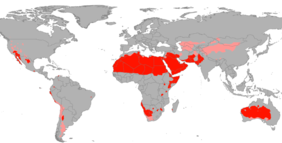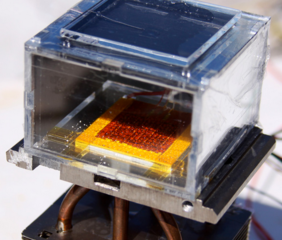Just a few days ago I posted a news on progress being made in water desalination. This is a great thing for people living in arid areas with access to sea water. It does not help those living inland, far away from a seashore.
Now I stumbled onto a news from MIT where researchers have applied the results obtained at Berkeley University on materials that can absorb a variety of molecules. These materials, MOF: Metal-Organic Frameworks, are substances whose structure includes a "hole" with the surrounding molecules having the property of attracting a specific compound that gets stored in the "hole" (watch the clip).
At MIT they managed to create a device that can extract H2O molecules (water) from the air. Even in the most arid area in the world the air contains a 20-30% of water molecules and the device can extract close to 3 litres of water using one Kg of a MOF specifically designed to capture water molecules in 12 hours.
Obviously in the middle of a desert it might be a problem to find a socket where to power the device! Fortunately, the device has been designed to operate using sunlight as energy source, making it ideal for the job.
The team at Berkeley keeps working to improve the effectiveness of MOF with the goal of doubling its efficiency (that would mean to be able to harvest 6 litres of water using 1 Kg of MOF) an the team at MIT looks to increase the overall efficiency of the device.
MOF are interesting because they can be customised to absorb a variety of molecules, including CO2. That would allow a production plan generating CO2 as a side effect of its processes to capture the CO2 before it is released in the atmosphere.
What has caught my attention, beyond the obvious usefulness of these materials, is the capability that we have gained to design materials to fit a specific goal by designing them bottom up, in terms of their molecular structure. This is a very recent capability and it is likely to reshape our idea of materials in the coming decades.








